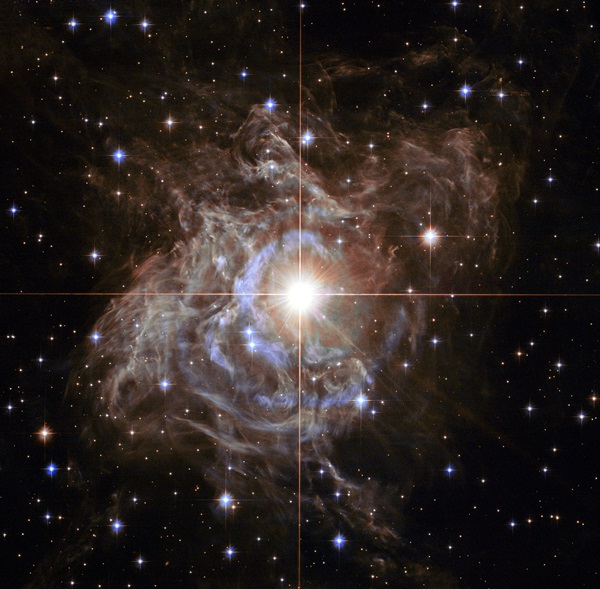Key Takeaways:
- Cepheid variable stars, pulsating stars with varying brightness and size, are crucial for determining astronomical distances, as exemplified by Edwin Hubble's Andromeda Galaxy measurement.
- The Leavitt Law, a period-luminosity relationship in Cepheid variables, allows distance calculations based on observed brightness variation and intrinsic brightness.
- A study utilizing APOGEE data investigated the impact of stellar composition on the accuracy of the Leavitt Law, finding consistent results regardless of the point in a Cepheid's pulsation cycle.
- This research, using APOGEE's large Cepheid catalog and consistent measurement methodology, enhances the accuracy of the Leavitt Law and improves distance measurements in astronomy.
These stars have been used as distance indicators since the early 1900s, thanks to the hard work of Henrietta Leavitt. And today, a young astronomer is using the Sloan Digital Sky Survey’s Apache Point Galactic Evolution Experiment (APOGEE) to make more precise measurements of Cepheid variables than ever before. Her project, featured in a press conference during last week’s 231st Meeting of the American Astronomical Society, showed that astronomers are still striving to understand the intricacies of these stars — and how they are closer than ever before to the final piece of the puzzle.
Why Cepheid variables are special
Kate Hartman, an undergraduate from Pomona College working with Rachael Beaton, the NASA Hubble and Carnegie-Princeton Postdoctoral Fellow at Princeton University, was tasked with using APOGEE data to determine the amount of elements present in each Cepheid star measured. Though it may sound simple, this type of measurement is vital to ensure astronomers’ calibration of the period-luminosity relationship for Cepheid variables — called the Leavitt Law — is correct. Problems with that calibration would affect distances measured using the law, which would increase uncertainties in other types of distance measurements, as well.
This is why only certain types of stars can be used as distance indicators — without the ability to know for certain how bright a star or other object actually is, astronomers cannot use it to measure distance.
APOGEE’s Cepheid catalog
So then the question arises: Do variables with slightly different chemical compositions or in different chemical environments have different period-luminosity relationships? Or is the single Leavitt Law capable of letting astronomers view any Cepheid variable, anywhere, and measuring its distance in a more straightforward way? And, additionally: Are surveys like APOGEE capable of producing reliable information, such as composition, about these stars, when a single image could catch the star at any random time during its pulsation period?
Hartman and Beaton wanted to find out. APOGEE was perfect for this job, because although it’s “optimized to study the cool, old giant-type stars found all across our galaxy,” said Beaton, “Cepheid variables … are similar in temperature, so they are well suited for APOGEE.”
Thus, APOGEE not only provides a large catalog of Cepheids, it also provides a tool to measure their properties in the same way that other (older) stars are measured. This type of consistency lets astronomers study both young and old parts of the galaxy to better trace its evolution.
The Cepheid variable star in the Andromeda
Galaxy that allowed Edwin Hubble to measure
the distance to our neighboring galaxy.
NASA/ESA/Hubble Heritage Team
So: APOGEE does a good job of measuring the chemical composition of Cepheid variables, regardless of where or when. That’s good news, because now that data can be paired with other up-and-coming surveys, such as Gaia parallaxes, to further test and calibrate the Leavitt Law and create an even better ruler for astronomers to use to measure and map out our galaxy and the universe around us.
An astronomer’s work is never done, even a century later. Stay tuned!











